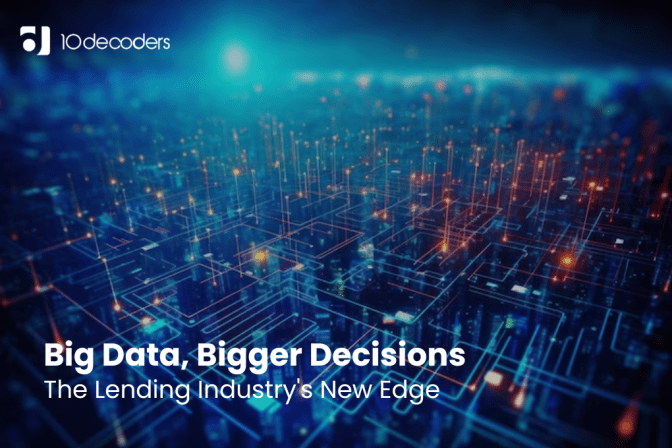Big Data, Bigger Decisions: The Lending Industry's New Edge
The landscape of the lending industry is undergoing a seismic shift. No longer defined solely by traditional credit scores and static models, the realm of loan approvals is embracing a powerful new force: big data. This vast ocean of diverse information, meticulously analysed and harnessed by sophisticated algorithms, is providing lenders with an unprecedented level of insight into borrowers, enabling them to make more informed and impactful decisions.
Beyond Credit Scores: Unveiling the Borrower Mosaic
Traditional credit scoring, while serving as a foundational tool, often paints an incomplete picture of a borrower’s financial health. Big data, however, offers a multifaceted portrait. By diving beyond the confines of credit reports, lenders can
- Analyse alternative data: Social media behaviour, online purchase history, mobile phone usage, and utility bill payments can reveal valuable patterns indicative of financial responsibility and spending habits.
- Leverage real-time information: Market fluctuations, employment trends, and even weather patterns can dynamically influence borrowers’ risk profiles. Big data allows lenders to stay abreast of these changes and adjust their assessments accordingly.
- Uncover hidden insights: Textual data from financial documents, social media posts, and online reviews can be mined for insights into a borrower’s financial literacy, risk tolerance, and future employment prospects.
This holistic view empowers lenders to move beyond the limitations of traditional models and make data-driven decisions based on a comprehensive understanding of each borrower’s unique circumstances.
Unlocking Benefits: Precision, Efficiency, and Inclusion
By harnessing the power of big data, the lending industry can reap a multitude of benefits
- Enhanced accuracy: Precise risk assessments lead to better loan selections, reducing defaults and losses while expanding access to credit for qualified borrowers who may have been overlooked by traditional methods.
- Streamlined processes: Automation powered by big data analysis can eliminate time-consuming manual tasks, improving efficiency and lowering operational costs.
- Personalised lending: Big data enables the creation of tailor-made loan products and terms based on individual borrower profiles, fostering greater customer satisfaction and loyalty.
- Reduced bias: By incorporating a wider range of data points beyond traditional socio-economic factors, big data can help mitigate bias and promote fairer lending practices, leading to a more inclusive financial system.
Navigating the Challenges: Responsible Use and Transparency
While the potential of big data is undeniable, responsible implementation is crucial. Key challenges include
- Data quality and integrity: Ensuring the accuracy, completeness, and fairness of the data used to train ML models is paramount.
- Model explainability and transparency: Black-box models, while powerful, can be opaque and raise concerns about bias and fairness. Lenders must strive for transparency in their decision-making processes.
- Ethical considerations: Big data raises ethical questions surrounding data privacy, algorithmic bias, and potential discrimination. Careful consideration of ethical implications is crucial for responsible data-driven lending.
Addressing these challenges through robust governance frameworks, continuous monitoring, and ethical considerations will ensure that big data serves as a force for good within the lending industry.
Addressing the Challenges
To overcome these challenges and harness the full potential of big data, the lending industry must
- Invest in data governance and quality control: Implementing robust data quality checks and ethical data sourcing practices is essential to ensure fairness and accuracy in lending decisions.
- Develop interpretable and transparent models: Utilising explainable AI techniques and fostering open communication about model development and decision-making processes can build trust and transparency with borrowers.
- Collaborate with data scientists and technologists: Building a skilled workforce with expertise in big data analytics and machine learning is crucial for successful implementation and ongoing optimization of data-driven lending solutions.
Conclusion: A Data-Driven Future for Lending
Big data is not a revolution, but an evolution. It is about augmenting human expertise with the power of insights gleaned from vast data sets. By embracing this transformation, the lending industry can make more informed decisions, create fairer and more inclusive financial products, and ultimately, empower individuals and businesses to achieve their financial goals. As we move forward, big data will continue to reshape the landscape of lending, driving a wave of positive change towards a future where data not only informs decisions, but also fosters a more responsible and equitable financial system.



